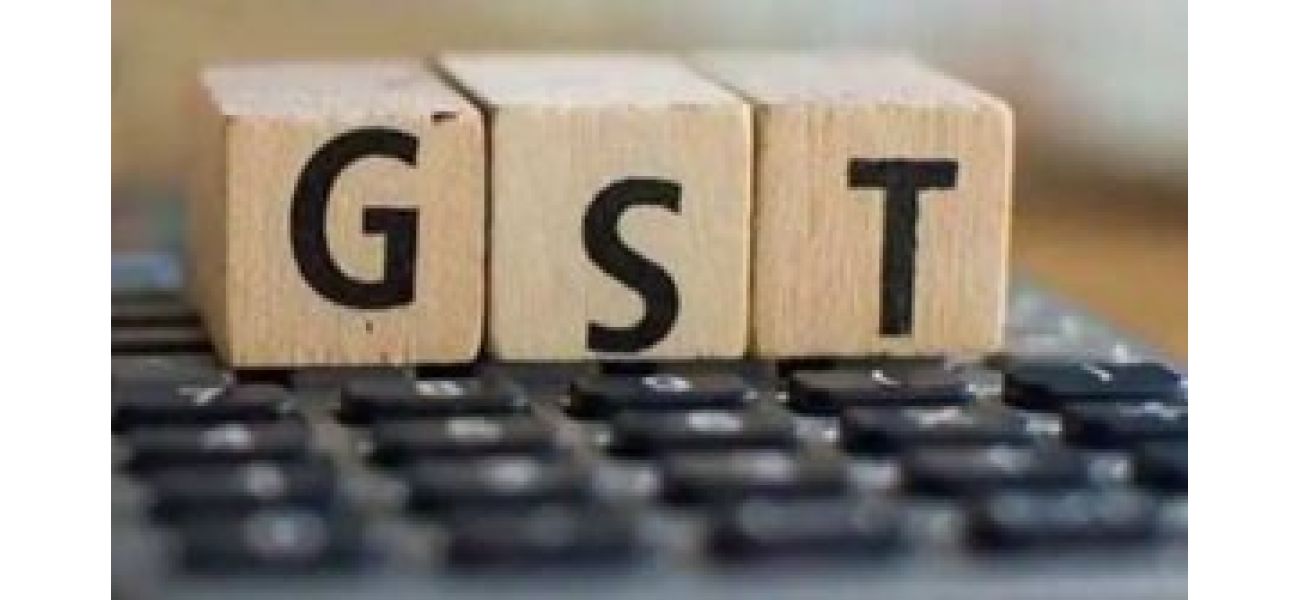The GST Council will convene on Wednesday and is expected to consider reducing taxes on everyday items.
Govt might impose 5% tax on electric vehicles as part of GST reform to decrease tax on everyday items. Council to discuss in upcoming meeting.
September 2nd 2025.

The Centre is expected to propose a 5% tax on electric vehicles as part of its ambitious plan to revamp the Goods and Services Tax (GST). This move aims to lower tax rates on everyday items such as butter and electronics. The all-powerful GST Council, chaired by Union Finance Minister Nirmala Sitharaman and comprising ministers from all states, will be meeting for two days starting Wednesday to discuss the Centre's "next-gen" GST reform proposal.
Under this proposal, the current 12% and 28% tax slabs would be reduced to just two rates - 5% and 18%. Additionally, a special 40% rate has been suggested for select items. While the reduction in tax slabs and the consequent decrease in prices has been well received, states ruled by the opposition are seeking compensation for any potential loss of revenue due to this restructuring.
It is worth noting that the current GST structure, with four tiers of 5%, 12%, 18%, and 28%, was implemented in 2017 with the aim of unifying various taxes imposed by the Centre and states. A compensation cess, ranging from 1% to 290%, is levied on luxury and demerit goods to create a revenue pool for compensating states for the loss of revenue.
However, this compensation mechanism is set to expire in 2022. In his Independence Day speech, Prime Minister Narendra Modi had announced plans for GST reforms, which were further shared with a Group of Ministers (GoM) from various states for initial review. The GoM has agreed to the Centre's proposal to eliminate the 12% and 28% slabs and reduce tax rates to benefit the common man. These recommendations will be discussed in the GST Council meeting on September 3 and 4.
While the GoM agrees with the changes in the tax slabs, it has suggested an 18% GST rate for electric vehicles priced up to Rs 40 lakh. However, the Centre is keen on promoting the adoption of electric vehicles and is in favor of a 5% tax rate. This stance will be presented in the upcoming Council meeting.
Under the proposed changes, essential food items like ghee, nuts, drinking water, non-aerated drinks, and namkeen, as well as certain footwear, apparels, medicines, and medical devices, are likely to move from 12% to 5% tax slab. Commonly used items such as pencils, bicycles, umbrellas, and hairpins may also see a reduction in tax rates to 5%. Electronic items like certain TVs, washing machines, and refrigerators are also expected to become more affordable as they will be taxed at a lower rate of 18%, as opposed to the current 28%.
However, goods like automobiles, which are currently taxed at the highest slab of 28% plus a compensation cess, may see a differential rate. Entry-level cars are likely to be charged an 18% tax rate, while SUVs and luxury cars may fall under the special 40% rate. This rate will also apply to other demerit goods such as tobacco, pan masala, and cigarettes. There may also be an additional tax on top of this rate for this category.
Opposition states, including West Bengal, have demanded that any additional levy on top of the 40% rate should be exclusively used for sharing with states to offset their revenue losses. Eight opposition-ruled states - Himachal Pradesh, Jharkhand, Karnataka, Kerala, Punjab, Tamil Nadu, Telangana, and West Bengal - have also called for all states to be compensated for any potential revenue loss following the implementation of the GST restructuring.
These states argue that the reduction in tax rates and abolition of slabs will result in lower revenues. However, the Centre believes that lower prices will boost consumption and eventually make up for any revenue loss in the long run. These states are expected to meet before the GST Council meeting on September 3 to discuss their strategy on the issue.
Sources also reveal that the Centre is equally concerned about the revenue implications of the GST restructuring. Its proposal aims to minimize any disruptions in revenue while also easing the compliance burden for businesses. According to the Centre's plan, 99% of items currently taxed at 12% will be moved to the proposed 5% slab, while 90% of items under the 28% bracket will be shifted to 18%.
Under this proposal, the current 12% and 28% tax slabs would be reduced to just two rates - 5% and 18%. Additionally, a special 40% rate has been suggested for select items. While the reduction in tax slabs and the consequent decrease in prices has been well received, states ruled by the opposition are seeking compensation for any potential loss of revenue due to this restructuring.
It is worth noting that the current GST structure, with four tiers of 5%, 12%, 18%, and 28%, was implemented in 2017 with the aim of unifying various taxes imposed by the Centre and states. A compensation cess, ranging from 1% to 290%, is levied on luxury and demerit goods to create a revenue pool for compensating states for the loss of revenue.
However, this compensation mechanism is set to expire in 2022. In his Independence Day speech, Prime Minister Narendra Modi had announced plans for GST reforms, which were further shared with a Group of Ministers (GoM) from various states for initial review. The GoM has agreed to the Centre's proposal to eliminate the 12% and 28% slabs and reduce tax rates to benefit the common man. These recommendations will be discussed in the GST Council meeting on September 3 and 4.
While the GoM agrees with the changes in the tax slabs, it has suggested an 18% GST rate for electric vehicles priced up to Rs 40 lakh. However, the Centre is keen on promoting the adoption of electric vehicles and is in favor of a 5% tax rate. This stance will be presented in the upcoming Council meeting.
Under the proposed changes, essential food items like ghee, nuts, drinking water, non-aerated drinks, and namkeen, as well as certain footwear, apparels, medicines, and medical devices, are likely to move from 12% to 5% tax slab. Commonly used items such as pencils, bicycles, umbrellas, and hairpins may also see a reduction in tax rates to 5%. Electronic items like certain TVs, washing machines, and refrigerators are also expected to become more affordable as they will be taxed at a lower rate of 18%, as opposed to the current 28%.
However, goods like automobiles, which are currently taxed at the highest slab of 28% plus a compensation cess, may see a differential rate. Entry-level cars are likely to be charged an 18% tax rate, while SUVs and luxury cars may fall under the special 40% rate. This rate will also apply to other demerit goods such as tobacco, pan masala, and cigarettes. There may also be an additional tax on top of this rate for this category.
Opposition states, including West Bengal, have demanded that any additional levy on top of the 40% rate should be exclusively used for sharing with states to offset their revenue losses. Eight opposition-ruled states - Himachal Pradesh, Jharkhand, Karnataka, Kerala, Punjab, Tamil Nadu, Telangana, and West Bengal - have also called for all states to be compensated for any potential revenue loss following the implementation of the GST restructuring.
These states argue that the reduction in tax rates and abolition of slabs will result in lower revenues. However, the Centre believes that lower prices will boost consumption and eventually make up for any revenue loss in the long run. These states are expected to meet before the GST Council meeting on September 3 to discuss their strategy on the issue.
Sources also reveal that the Centre is equally concerned about the revenue implications of the GST restructuring. Its proposal aims to minimize any disruptions in revenue while also easing the compliance burden for businesses. According to the Centre's plan, 99% of items currently taxed at 12% will be moved to the proposed 5% slab, while 90% of items under the 28% bracket will be shifted to 18%.
[This article has been trending online recently and has been generated with AI. Your feed is customized.]
[Generative AI is experimental.]
0
0
Submit Comment





